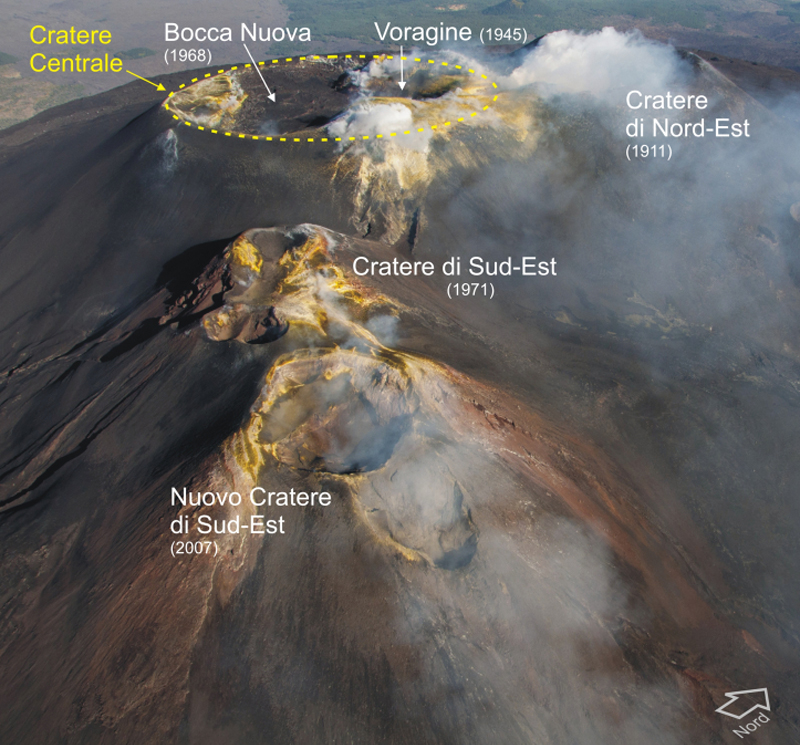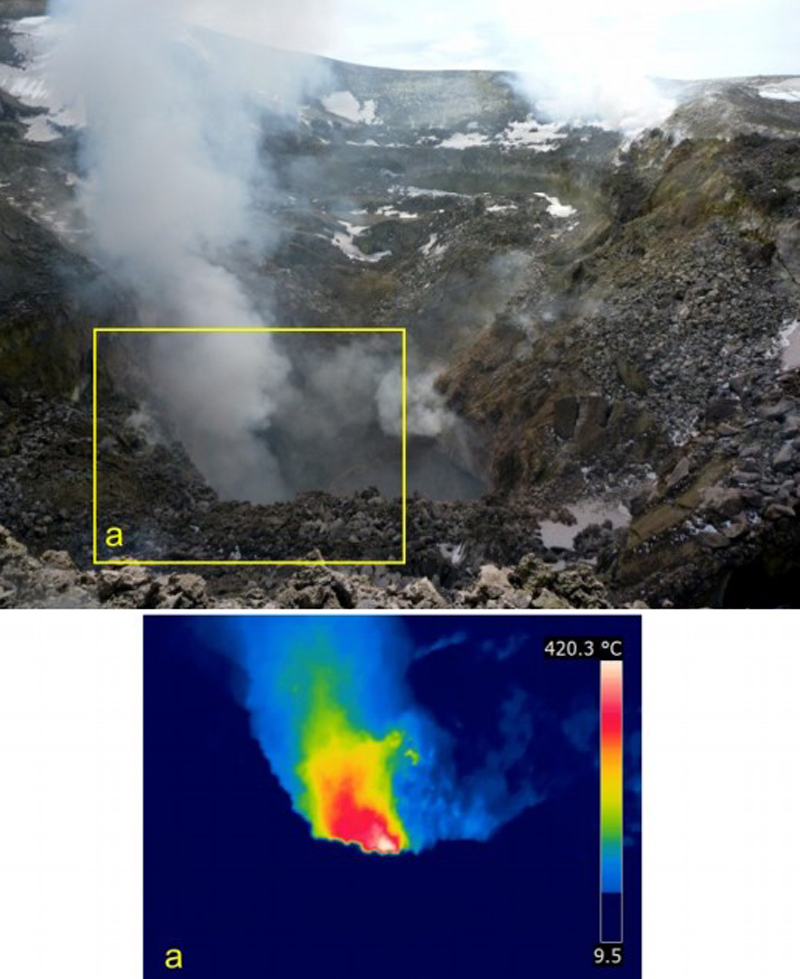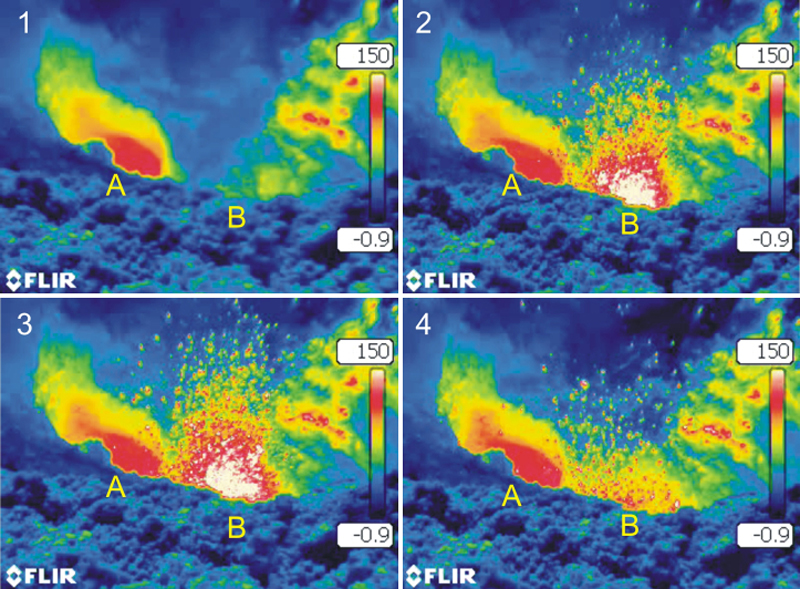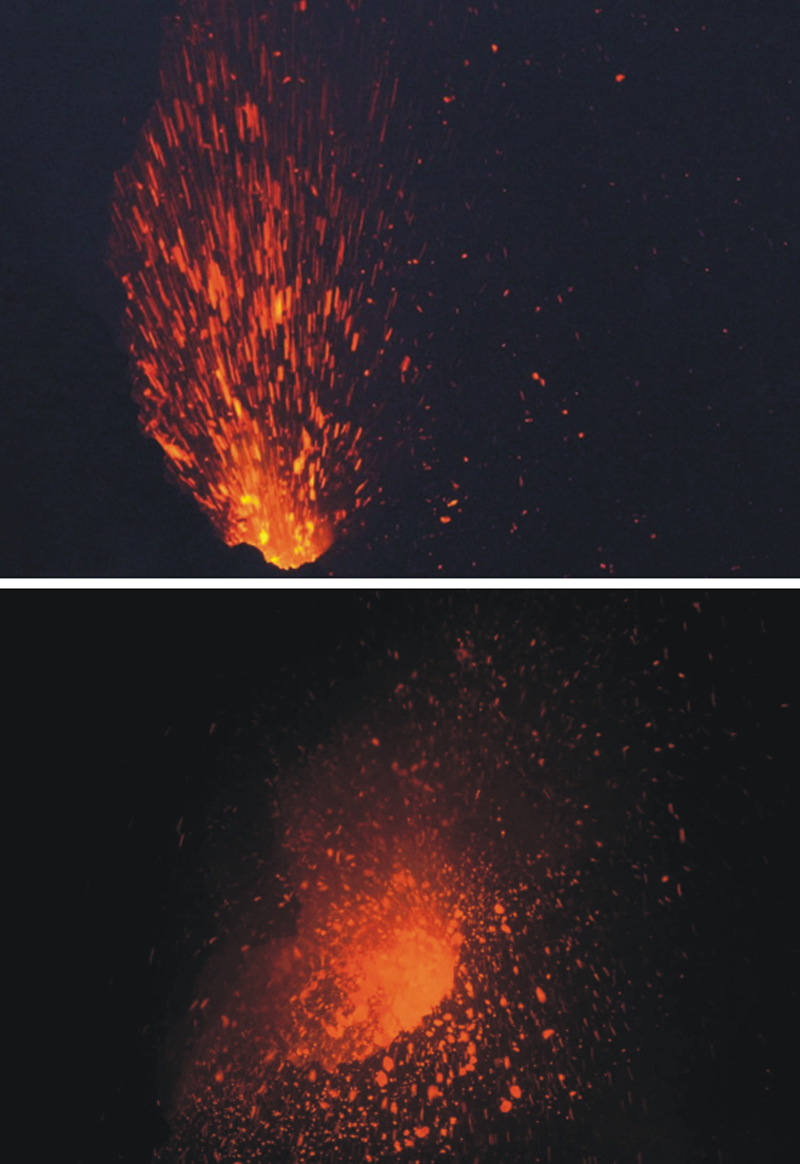Report on Etna (Italy) — August 2018
Bulletin of the Global Volcanism Network, vol. 43, no. 8 (August 2018)
Managing Editor: Edward Venzke.
Edited by Janine B. Krippner.
Etna (Italy) Degassing continues, accompanied by intermittent ash emissions and small Strombolian explosions in June and July 2018
Please cite this report as:
Global Volcanism Program, 2018. Report on Etna (Italy) (Krippner, J.B., and Venzke, E., eds.). Bulletin of the Global Volcanism Network, 43:8. Smithsonian Institution. https://doi.org/10.5479/si.GVP.BGVN201808-211060
Etna
Italy
37.748°N, 14.999°E; summit elev. 3357 m
All times are local (unless otherwise noted)
Etna is the tallest active volcano in continental Europe with persistent activity at multiple summit craters and vents. The active craters are Bocca Nuova and Voragine within the Central Crater, the Northeast Crater, Southeast Crater, and the New Southeast Crater (figure 217). This report summarizes activity from April to July 2018 and is based on reports by the Istituto Nazionale di Geofisica e Vulcanologia (INGV).
Activity through April was characterized by degassing at the summit craters (figure 218), with modest ash emissions from the New Southeast Crater and Northeast Crater in the first week, and occasional small ash emissions at the end of the month. Reduced activity dominated by degassing continued into May with modest ash emission from the Southeast and Northeast craters during the second week, and isolated ash emissions from the Northeast Crater in the second half of the month continuing into June.
Throughout June the activity consisted of degassing at the summit craters with isolated diffuse ash emission from Northeast Crater (figure 219). This continued through to July until low-energy Strombolian activity commenced in the Bocca Nuova (from two vents) and Northeast craters (figures 220 and 221). The Strombolian explosions were small, lasting up to several tens of seconds, and were sometimes accompanied by red-brown ash emission. The ejected material was confined to within the craters. More energetic bursts were visible from the INGV surveillance camera located in Milo.
Geological Summary. Mount Etna, towering above Catania on the island of Sicily, has one of the world's longest documented records of volcanism, dating back to 1500 BCE. Historical lava flows of basaltic composition cover much of the surface of this massive volcano, whose edifice is the highest and most voluminous in Italy. The Mongibello stratovolcano, truncated by several small calderas, was constructed during the late Pleistocene and Holocene over an older shield volcano. The most prominent morphological feature of Etna is the Valle del Bove, a 5 x 10 km caldera open to the east. Two styles of eruptive activity typically occur, sometimes simultaneously. Persistent explosive eruptions, sometimes with minor lava emissions, take place from one or more summit craters. Flank vents, typically with higher effusion rates, are less frequently active and originate from fissures that open progressively downward from near the summit (usually accompanied by Strombolian eruptions at the upper end). Cinder cones are commonly constructed over the vents of lower-flank lava flows. Lava flows extend to the foot of the volcano on all sides and have reached the sea over a broad area on the SE flank.
Information Contacts: Sezione di Catania - Osservatorio Etneo, Istituto Nazionale di Geofisica e Vulcanologia (INGV), Sezione di Catania, Piazza Roma 2, 95123 Catania, Italy (URL: http://www.ct.ingv.it/it/); Blog INGVvulcani, Istituto Nazionale di Geofisica e Vulcanologia (INGV) (URL: http://ingvvulcani.wordpress.com).






